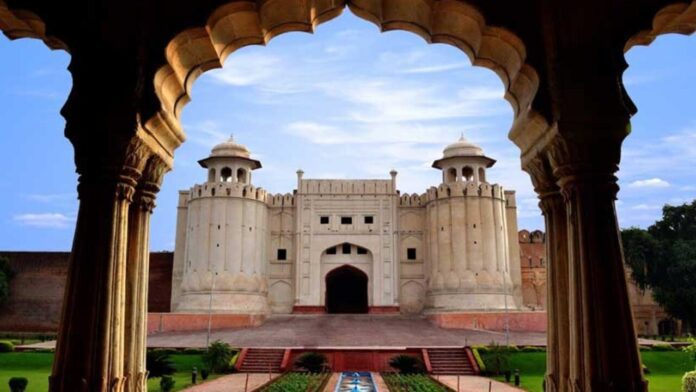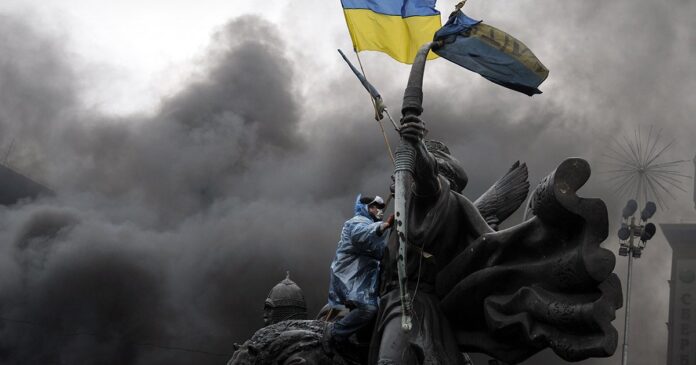It is progressively evident that China’s monetary and political power equals that of the US. This is possibly a significant issue for worldwide organizations since China’s ascent could prompt more US-China exchange struggle and interruption of supply chains, compromising new and progressing unfamiliar direct venture, and bringing different nation states system in international relations into the bumping for power. Nonetheless, we contend that globalization isn’t jeopardized by China’s development as a practically identical capacity to the US. The US and China both have personal stakes in keeping everything under control, and these two nations are each giving worldwide public merchandise that boosts monetary transparency among different nations of the new world order. In this paper, we foster a hypothesis relating to this contention and give proof that globalization has not declined even as the worldwide circulation of force has moved. While the worldwide combination is probably going to endure, troublesome encounters between the US and China will happen with some consistency. In this manner, we recommend that worldwide organization procedures today should zero in additional on hazard the board connected with strategy shifts originating from China’s ascent and less on accomplishing smallest expense worldwide stockpile chains. We present danger to the executive’s system for this reason.
Changing Power Dynamics in New Century
The rise of China and the beginning of the new world order is the most important economic and political phenomenon of the 21st century. It would be based on one world order of China. It had great implications for global security, global governance, and international relations. While China’s status in global exchange is particularly important, it is likewise developing by different proportions of worldwide power. China’s developing clout in worldwide creation and monetary business sectors are clear as far as its worldwide authority in generally speaking assembling, in the seaward gathering of gadgets and materials, and its developing monetary initiative through claiming the world’s four biggest banks. China is likewise filling in worldwide administration through the improvement of new establishments like the Asian Infrastructure Investment Bank (AIIB), the as of late marked Regional Comprehensive Economic Partnership (RCEP), and its Belt and Road initiative.
While the US and China are rivals on a few policies centered issues, they don’t have various dreams for the worldwide economy, as both work open monetary approach systems, even for certain critical contrasts in structure (for instance, China has a lot more state-claimed organizations than the modest bunch in the US). In addition, there is a monetary beneficial interaction, where every nation offers includes that are useful to the next. China offers minimal expense producing abilities that supplement the US plan of made products and a business opportunity for selling them. The US offers made merchandise that is not made in China to the Chinese market, in addition to ones collected in China but created in the US, just as essential items, for example, horticultural and mining products, and a wide scope of administrations. Also obviously, the US offers China the world’s biggest market for selling Chinese labor and products.
China Centric New World Order
Xi Jinping’s ambition is to reorder the world and make it China-centric new world order through any possible means. As Economy exhibits through a progression of contextual analyses, Xi has sought after a particular procedure to understand his aspiration. He use the force of China’s market and its military to prompt and constrain different nations into agreeing with Chinese interests. He additionally involves China’s administrative roles in the United Nations and other worldwide administration foundations to build up his strategy inclinations inside those bodies. By following Xi’s playbook, Beijing “has gained ground in propelling its basic freedoms, web administration, and advancement standards,”. Progressively, notwithstanding, China’s state-focused model and coercive discretion have restricted the fascination of large numbers of its drives,” Economy notices. From social commodities like Confucius Institutes to foundation projects subsidized by Xi’s Belt and Road Initiative (BRI), lead Chinese international strategy programs have experienced developing obstruction all over the planet.
Quick forward to the current day and a specific rendition of sway sits at the core of the Chinese Communist Party’s vision of the following scene request. Wang Huning is the brain behind Xi, similarly as he was the theoretician behind Xi’s ancestors Jiang Zemin and Hu Jintao. He as of now sits at the summit of political life in China: on the Standing Committee of the Politburo. Sovereignty sits at the core of Beijing’s thought of a “local area of shared future” – one more expression that Xi utilized in his UNGA discourse. It appears to be that this local area is antagonistic to shared sway and multilateralism. In the most natural-sounding way for Xi, “We should dismiss endeavors to assemble alliances”. China’s vision of a world request is one with a nation state system in international relations in which nations remain all alone and advance in a global framework as people. This is a dream in which enormous nations matter more than little or fair size ones. It fits perfectly with the possibility of a territorial, or even worldwide, pecking order – one in which Beijing sits at the top. It is an ordered progression open to all, insofar as each knows its place.
China’s Vision For New World Order
In spite of the fact that they depend vigorously on past models of Chinese incomparability, political and scholarly elites shun the subject of the standardizing underpinnings of their vision. The China-drove world request they imagine isn’t established in customary Chinese insight or Confucianist standards; nor is it settled in Communist progressive beliefs. Simultaneously, references to China’s magnificent past don’t mean Beijing just looks for emblematic appearances of yielding from others. Its vision is established in the Leninist thought of force and mastery. Leninist ideas of infiltration, disruption, and access for the quest for explicit destinations are likewise utilized by and by to help China’s development. In total, China’s vision is the place where tianxia meets Leninism. A partial system that is neither worldwide nor territorial. Beijing doesn’t appear to focus on a total defeat of the current global request. All things considered, basically, in the medium term, the goal is by all accounts the structure of a new, incomplete framework cut out of the current request. This subsystem would be various leveled with China at the top of one world order just as at the middle and unbalanced. China would be the greatest, generally strong, and most mechanically progressed state, with more modest, more fragile, subjected states surrounding in its circle. The China-drove request would not be worldwide, yet neither would it be simply territorial. For sure, it could ultimately extend to incorporate a significant part of the creating, non-Western world, where the power deviation would be manifest.
Inside the limits of this subsystem, China would not need different nations to recreate its political framework or administration model. It would like, nation state system in international relations will have liberal majority rule esteems and standards are smothered. It would likewise urge others to reflect its homegrown strategies over a wide scope of regions, including law and cycles, schooling and media, improvement and help, and modern guidelines and standards. In sum, Beijing appears to incline toward a fractional, free, and pliable authority. This authority is incomplete because it infers the presence of an authoritative reach rather than a desire to run the world; free since Beijing doesn’t appear to imagine immediate or outright command over unfamiliar regions or state-run administrations; and pliable, because the nations included under Chinese authority don’t appear to be characterized along geographic, social, or philosophical lines, as long as they regard China’s predominance.
Implications and Policy Options For US
As a result of the free, fractional, and moldable nature of China’s imagined authority, and the reality it is as yet in its earliest stages, the United States can endeavor to shape China’s vision in manners that are more gainful to U.S. interests. The following are four choices for running after this objective. Focus on new areas of rivalry. China’s vision for another world request focuses on two primary areas of need: the creating, non-Western, non-vote-based world and the current worldwide establishments. Both ought to be perceived as regions where the U.S.- China vital contest is unfurling and hence given more noteworthy consideration by the U.S. government.
China’s development is fundamentally put together not concerning the utilization of military instruments but on the utilization of monetary statecraft and the extension of endeavors to shape the outside climate through both impact activities and “talk power”- the ability to implant thoughts and standards that support the global request. The U.S. government should focus on both and think about them as areas of rivalry comparable to the tactical space in the new world order. For some nations all over the planet, there might be no fundamental contrast between Chinese authority and U.S. initiative, trusting that “extraordinary powers will do how they generally treat.” The United States ought to be more methodical in showing the contrast between global administration practiced by a liberal democratic system and by a biased tyrant system. It ought to stay focused on the help of a liberal majority rules system all over the planet of nation state system in international relations we are currently simply starting to get frail signs of Chinese aspirations on the global stage. We ought not to sit tight for China to completely execute its arrangements before beginning to ponder strategy choices. The different U.S. government offices that are now involving key prescience as instruments for strategy arranging ought to incorporate China all the more methodically in their activities and foster situations that go past military conflict games.
Conclusion
China is requiring the foundation of another world request that will guarantee a drawn-out steady and tranquil global climate, Foreign Ministry Spokeswoman Zhang Qiyue said in Beijing on June 10, 1999. The more than 200 nations on the planet and over six billion individuals ought not and can’t be put heavily influenced by one nation or gathering of the nation-state system in international relations, she said, stressing that multi-polarization has turned into an irreversible verifiable pattern of one world order after the finish of the Cold War. A country’s undertakings ought to be dealt with by its kin and worldwide issues ought to be settled through exchanges, she said, adding that the United Nations, the association that has the biggest number of part countries and that is generally delegated, should assume a prevailing part in foreign relations and that this is the presence of mind in the global-local area. The normal wish is for the foundation of an equitable and sensible new political and monetary request on the planet comprising nation-state system in international relation, she said, one that must initially assist with establishing a drawn-out tranquil climate for the improvement of all nations on the planet. It should likewise address the normal interests surprisingly and typify the turn of events and progress needs of the time, she said. The premise of the new world request, she said, ought to be the five standards of tranquil conjunction and other global standards. The five standards allude to shared regard for every country’s sway and regional honesty, common peace, non-impedance in one another’s inner undertakings, equity and common advantages, and tranquil conjunction.
















